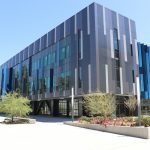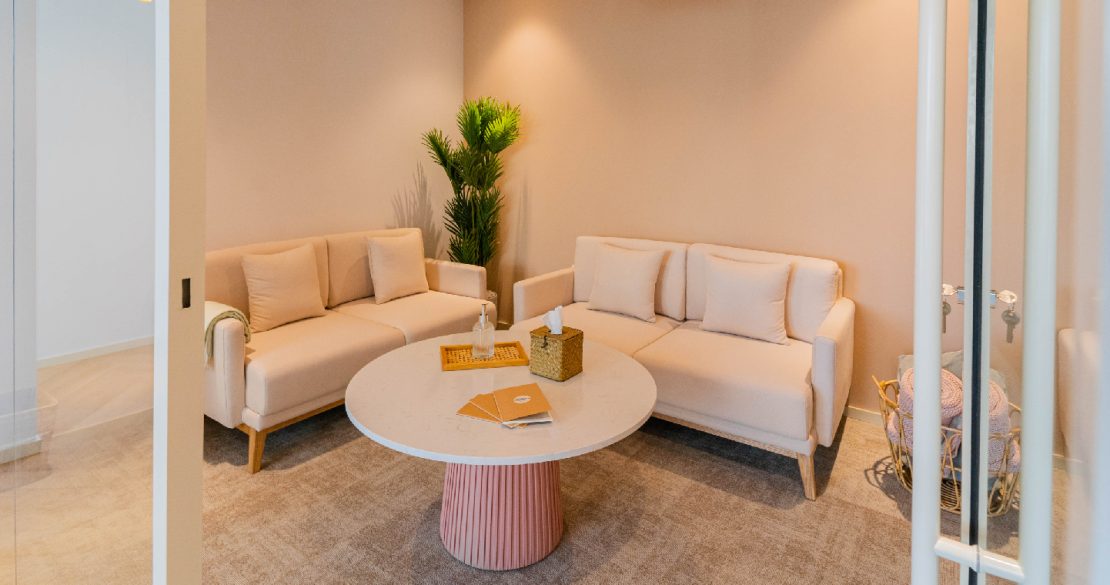There are many places throughout the world that have ancient ruins dating back to “BCE” times, some even tens of thousands of years. While some may be ruins, parts of the main structure have been preserved over time. Archaeologists have identified them to be housing, palaces, forts, and places of worship. The building of ancient Rome still stand, and include structures for entertainment and government as well.
The historic structures around the U.S. don’t come close in age to any of these structures. Oftentimes, rightly or wrongly, the historic buildings across the U.S. are taken down in favor of modern construction. But we must move forward, in life, and in building.
Your building is one whose shell has stood for quite some time, but to keep up with today’s trends and changes you need to do some updates. Some things in your building may not be able to be used as efficiently as they once were, or critical systems like electrical wiring, plumbing, and the like are in dire need of an upgrade.
While retrofitting can mean just the basic installation of newer fixtures in an older building, many people also take the time to add “green” features. Let’s take a look at how you can retrofit your existing spaces to meet modern needs.
Table of Contents
Why Retrofit Your Building
Before You Start
Electrical Wiring
Lighting
Plumbing
New Pipes
Low-Flow Fixtures
Graywater Recycling
Eco-Friendly Landscaping
Windows
Doors
Solar Panels
Final Thoughts
Why Retrofit Your Building
Those ancient and historic buildings didn’t earn those titles by being knocked down. Instead, they were reworked, repurposed, or improvements were made. More modern buildings, like a historic schoolhouse, can be retrofitted with things like new insulation, plumbing, wiring, and more to bring it up to today’s codes and standards. Making the upgrades allows the renovators to breathe new life into the structure – it may become a home, church, place of business, or even welcome students once again. There’s no need to tear down a building that is structurally sound when system and cosmetic upgrades what’s needed most.
Before You Start
You can’t just come in with a sledge hammer and start knocking down walls. First of all, you need to map out where studs, wiring, plumbing pipe, and more are in the building and in individual spaces.
If your aim is also green features including energy-efficiency, you need a comprehensive plan as to how you’ll achieve that. Older buildings have no energy-efficiency whatsoever – they were built decades ago, before people cared how their buildings impacted the environment. That’s not necessarily the case. Your building may have been built with energy-efficiency in mind, but over the years the systems and features have become outdated and need to be replaced.
Just as you map out where everything is so you don’t accidentally take out a load-bearing wall, map out your energy-efficiency with an audit. Bring in a professional to evaluate the building’s current performance. They can identify key energy-efficiency efficiency issues that need the most immediate attention. The auditor will:
– Evaluate the building envelope
– Evaluate existing systems & appliances
– Test for gaps that create thermal bridges, air infiltration and heat loss
– Test for duct tightness
– and more!
Provide the auditor with a stack of recent electrical bills for analysis. The historical data paints a picture of current and past use patterns, and can help them create a plan that accurately takes into account the scope and type of updates needed for effective energy consumption and improved overall environmental quality.
You have an older building, so retrofitting it for modern needs means any history or character had will be lost. Not necessarily, and there are ways to work with your structure’s existing materials to increase energy-efficiency and your green footprint without sacrificing the look and feel of your building. Create a team of yourself, your energy auditor, and a historical building preservationist – who will help determine the least invasive ways to accomplish your energy-efficiency goals without losing historical integrity.
Electrical Wiring
The history of electrical wiring is as twisted as wiring itself. Giving your building’s wiring an upgrade gives your electrical system the boost it needs to act more energy-efficient, and to support the newest technologies. Being wired for now and into the future means you may not have to make another upgrade for many years to come. New wiring will also allow you to safely install and run energy-efficient upgrades like LED lighting.
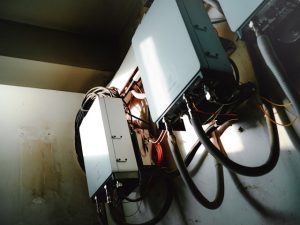
Take a look at more than just electrical wiring. The internet and how we access it has advanced by leaps and bounds as well. Wi-Fi is the name of the game, and with the rise of the Internet of Things, a strong connection and appropriate wiring is a must.
Lighting
Going hand-in-hand with electrical wiring, update your building for today’s needs – and a greener building at the same time! A few ways to retrofit your old building the modern need for energy-efficient lighting include:
– Replace incandescent, fluorescent, or halogen bulbs with energy-efficient LEDs
– LEDs are 40-9% more efficient than the bulbs they replace
– LED technologies may require different wiring than your current system
– Use motion sensor technology in less frequently used spaces (bathrooms, storage areas, etc.)
– Install automatic daylight sensors to control interior lighting to use less when natural light is more effective
– These sensors offer a 20-60% energy savings
– Opt for fixtures that cast the most light with the least amount of “work” (a single, larger fixture will be better for energy-efficiency and cost savings than multiple smaller fixtures)
and more!
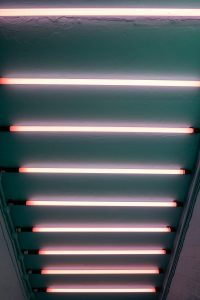
When you consult with Structr Group, we can discuss all your options for upgrading the lighting in your building or space.
Plumbing
Below are just a few of the things you can do to make your water system a part of the 21st century, and add some green features along the way. During a consultation, we can help you with these fixes and give you the latest information on all the plumbing solutions available to you.
New Pipes
Like with many other building materials, technology and safety standards change frequently. Most buildings in active use today have modern piping, but in places like Flint, Michigan, they are still replacing old pipe to meet today’s standards. Imagine replacing the pipe throughout an entire city!
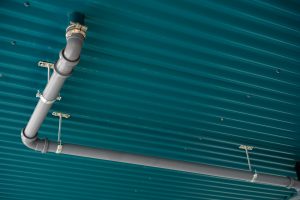
There are a number of options when it comes to replacing piping, including copper, galvanized iron, brass, cast iron, stainless steel, PVC, and more. The type of piping used will depend on many factors such as purpose, location on the property, and cost. We can help you choose the right pipe for the job as we lead you and your business through the retrofitting process.
Low-Flow Fixtures
Sinks, toilets or urinals in bathrooms, watering systems for landscaping, and the many other uses of water for your building and property results in thousands of gallons of H2O flowing through your building’s pipes on a daily, if not hourly, basis. Updating your water system, including pipe and fixtures, and going green with it while you’re at it is easier than you think, and your users (employees, customers), likely won’t even notice.

Install low-flow faucets on bathroom or break room sinks, and save close to a gallon of water per minute! Install low-flow dual-flush model toilets and go from 3-5 gallons per flush to just 1.5 gallons per flush.
Graywater Recycling
Reduce, reuse, recycle! It’s been at the top of the list for decades when it comes to how to create less environmental impact. Installing a graywater recycling system means you do all three at once, saving thousands of gallons of water along the way.
A graywater recycling system is a simple system that allows you to reuse water from sinks and other sources like washing machines or dishwashers for non-potable uses like flushing toilets or irrigation. When you install a graywater system, you capture this water as it heads down the drain and instead divert it through a filtration system for re-use. Your building uses less water and performs better. Like with low-flow fixtures, your users won’t even notice.
In Arizona, graywater systems can be a lifesaver since rain isn’t exactly plentiful throughout the year. Reusing what you already have reduces your need for fresh water for activities that don’t require it. Businesses like golf courses and others with large areas of landscaping to maintain benefit from installing graywater systems.
Eco-Friendly Landscaping
While “desert landscaping” isn’t the most colorful landscaping throughout the year, it serves an important purpose in Arizona. Whether on residential or commercial properties, desert landscaping uses less water and features plants indigenous to the area. In Arizona, that includes a lot of cacti!

Saving water is an important concern to consider when retrofitting your building and its surroundings to fit the modern needs of the environment. Desert landscaping uses less water for maintaining landscaping and allows you to divert it to more pressing uses.
Windows
Rip out the old windows and replace with brand new, sleek, double- or triple-pane insulated, energy-efficient windows – especially in buildings with old, single-pane non-insulated pieces of framed glass. They do nothing to help your building meet modern needs. They come in various modern styles and colors to fit the aesthetic desires of today.
While that may be true, don’t get too trigger-happy. It’s why you’ve involved a preservationist (especially if your building is over 60 years old). You want to bring your building up to modern codes and standards, but still pay homage to its past. The appropriate retrofit for old windows that are still in good shape, functional, or easily repaired is to keep them in place.

Bring the building itself up to modern standards with interior storm windows, also known as secondary windows. Interior storm windows are a single pane of glass installed on the inside of an existing window. This new pane combines with the original to create the energy-efficiency and modernity of a new double-pane insulated window, but doesn’t remove the historical elements of a building.
No matter the age of your building, careful consideration and choice is a must. Retrofitting windows means choosing windows that match mullions and rails of the historic windows, minimizing the impact on the building’s visual appearance and potential damage to the historic frames.
Note: in the case of missing or non-historic windows already in place, replace those windows and opt for replicas of the originals to bring back the aesthetics of the building.
During a consultation, we’ll review your project and help you choose the right windows for your modern needs and goals, as well as the aesthetic you’re hoping to project.
Doors
A good energy-efficient door is designed to control the amount of heat entering or leaving a space, whether that’s a whole building, an office, or a single room. Energy-efficient doors work alongside energy-efficient windows to regulate temperature and keep your heating and cooling costs down by preventing air leaks. There are a variety of types and styles of doors, including an array of colors and materials, with high energy-efficiency ratings to fit modern needs. We can help you choose the one(s) that fit your indoor and outdoor aesthetics while addressing the modern look, feel, and other goals for your retrofit.
To preserve the doors of a historic structure, add interior doors with higher energy-efficient ratings, or commission energy-efficient replicas. You’ll still have a number of doors to choose from.
Solar Panels
While not necessarily a “need” when modernizing your building, much of a building’s modernization comes with adding green features, like solar energy. Harnessing the energy of the sun to make your electrical meter spin backwards is great for your wallet; it’s also one of the easier ways you can retrofit and bring your building into the modern era. The up-front costs of the panels, the battery bank, and other necessities for an efficient system can be large, but the long-term dividends are worth the investment.
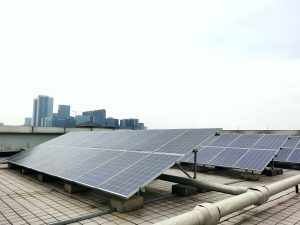
Where to install the panels may be an issue as well. Solar panels must be placed in a location for maximum sunlight without being an eyesore. For example, many companies opt to install solar panels on the roof of the building or the roofs of covered parking spaces.
Final Thoughts
Breathing new life into older buildings can be a difficult task, but it’s one you’ll want to tackle to bring your building up to today’s standards and ready for the future. With a detailed road map, you can find the best route to upgrade your building.
We at Structr Group can help you add or upgrade features you want and need to make your building stand out among the crowd while paying respect to building and its roots.
Contact us today!





